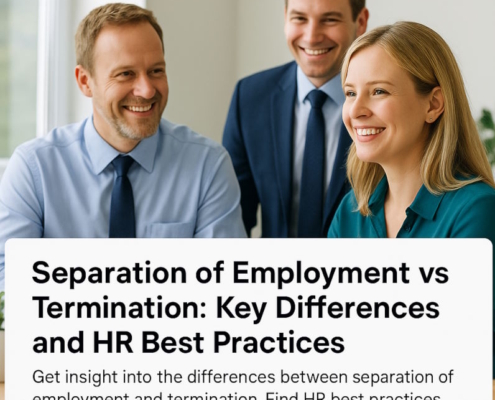What is an employee development plan?
Unfortunately for employers, the old model of focusing only on education has not produced a talent pool with the right set of abilities. The capacity to innovate and the costs connected with employees are both hindered by these skill gaps, which harm companies on multiple levels. This emphasizes how important it is for HR to provide efficient programs for employee growth.
In order to help managers and employees create and implement an effective employee development plan, this article will give HR managers a clear grasp of what a plan is and how to make one.
With the support of an employee development plan, workers can hone their abilities to do their current and future jobs better.
When designing a program to help an employee grow professionally, it’s important to keep in mind not only the person’s but also the company’s objectives. Having a documented plan for professional growth makes everyone involved (management, HR, and the individual) more accountable and transparent.
Different kinds of employee development plans
Improving an employee’s performance is the main objective of a performance-based plan. It finds out what the employee needs to grow, establishes new goals, tracks their progress, and makes plans to reach those goals.
The HR department devises training programs to equip newer and younger workers to take over crucial positions in the organization as part of the succession plan.
The management-by-objectives approach prioritizes the here-and-now while empowering employees to chart their own course toward the company’s long-term vision. Workers constantly assess their own performance with the goal of improving it; subsequently, they are free to adjust their goals according to their own preferences.
An ad hoc plan is a more informal approach to staff development that focuses on meeting the needs of each individual. It helps employees who want to advance in their professions by honing their particular skill sets.
Organizations often create comprehensive and long-term strategies to help their employees hone their leadership abilities in order to better prepare them for positions of management.
Employee development and its advantages
A corporation should invest in its employees’ professional growth rather than always seeking outside talent for managerial roles for the following reasons:
- Resolving shortcomings in skill sets
Nearly half of American workers, according to new Gallup data, would look for a new job if it offered possibilities to improve their abilities. Accordingly, if you want to attract top talent to work for your business, you need to include staff development in your pay and benefits package.
By reducing employee turnover and increasing engagement through learning opportunities, businesses may increase productivity and profitability.
- Filling in knowledge gaps
Workplaces are undergoing major transformations as a result of technological advancements. People need to constantly improve their abilities so they can keep up with the ever-changing job market and industries, as skills are becoming obsolete at a rapid pace.
To help close skill gaps, companies should invest in their current workforce by providing opportunities to learn new skills. This could lead to employees staying with your firm for longer and gaining valuable insights into your clients and culture. This could be a game-changer for your business.
- Greater enthusiasm and commitment from staff members
According to Gallup’s research, companies see progress when their personnel are actively involved. Productivity, profitability, and staff retention may all take a major boost when workers are enthusiastic about their work. The company suffers just as much when morale is low among workers. When compared to teams whose members are enthusiastic about their work, those whose members are disengaged are more likely to miss work by 37% and make 60% more mistakes.
Programs that help employees grow professionally are clearly beneficial to businesses. The company’s bottom line, sales, and customer satisfaction can all see a significant boost when workers take part in training and development programs.
- Staying ahead of the curve
In a competitive job market, it can be extremely difficult for companies to find and keep talented employees. The best and brightest want to work for companies that encourage their employees to grow professionally so they may take their careers to the next level.
You can help your company stay competitive in the market by ensuring that your staff have the technical knowledge and skill sets needed to provide innovative goods and services. If you want your business to succeed as a whole, you need to train your employees to play to their strengths while fixing their weak spots.
- Providing opportunities for participation
All employees, but notably those from marginalized groups, should be the focus of an organization’s efforts to improve their skill sets. Make sure every employee advances in their career by investing in their professional development using internal and external resources.
In order to create leadership development programs and succession plans, the company’s L&D and DEI experts should collaborate. Discuss issues like unconscious bias and inclusive leadership.
- Establishing a learning culture
Businesses require a flexible workplace and a culture of continuous learning to keep up with the ever-shifting demands of technology and the changing nature of work. Your business will have a leg up on the competition thanks to its agility and responsiveness if it adopts an agile learning culture.
In response to these shifts, businesses should implement a comprehensive employee development strategy to train workers to meet the new challenges and opportunities in the workplace and the marketplace.
- Keeping employees from leaving
Gallup found that nearly half of all American workers would look for a new job if it offered more opportunity to learn new skills. Achieving professional advancement through skill acquisition is a key component of fulfilling work.
Companies can save time and money with learning programs because they eliminate the need to recruit and educate new staff.
- Bringing employee growth in line with company objectives
How effectively do workers grasp the company’s big picture and its objectives? It could be challenging for HR to identify specific instances of this in the company, especially in large or fragmented organizations.
Having “a line of sight” (or connection) between employees’ work and the larger goals and strategy is still very valuable. Both the company’s and the employee’s development objectives can be advanced in this way. Staff members who have a firm grasp of the company’s objectives are in a better position to coordinate their professional growth with the desired results.
The largest obstacles for employee development plans
Employee development programs are challenging to design and execute for a variety of reasons, regardless of the level of goodwill involved:
Wrike found that management is overly preoccupied with communication (6-15 hours per week on meetings and 2-4 hours per day on emails), with 98% of managers devoting 40%-87% of their work week solely to this. Naturally, it is difficult to find the time to encourage their staff to pursue opportunities to improve their skills, particularly if their main objective is to achieve goals connected to return on investment (ROI), such as sales or productivity.
Workloads are too high: Nearly one-third of workers (34%) reported very high levels of stress at work, and 94 percent reported feeling stressed overall in the same Wrike poll. Work and personal life are both negatively impacted by excessive stress. Staff members may be hesitant to take part in training programs, despite the fact that doing so would help them grow in their careers, due to the perceived increase in their already heavy workload.
Poor information retention occurs when training is infrequent, making it impossible for employees to completely understand and implement what they have learned. Repetition and going over information that has already been learned should be done regularly and at the right time to keep memories current, minds focused, and workers interested.
Examples of effective employee development plans in action
Companies like IBM and AstraZeneca are leading the way in creative approaches to help their employees develop and improve their skills:
- Leader as Coach at AstraZeneca
Experience real-world leadership development with AstraZeneca’s ‘Leader as Coach’ program.
Direct reports and supervisors use criteria like “recognize and celebrate team accomplishments” and “promote an environment that encourages others to maximize their potential” to assess participants. The manager’s comments help the team working on the program’s development and the participants gauge its success.
- Training programs at IBM
In an effort to fill skill gaps and improve employee performance, tech behemoth IBM is providing a number of training programs:
- Your Learning: Through platform-driven learning, staff members can acquire blockchain, AI, and design thinking abilities that will help them in their future employment.
- IBM Credentials: Workers who finish the program are eligible to receive digital badges, specializations, and certifications from IBM.
- The AI Skills Academy teaches workers how to solve business problems and work with AI-enabled technology in novel ways.
How can human resources help managers put together an employee development plan?
Here are some actions that HR and management may follow to have employee development programs ready:
1: Get the boss on board
Get to know the managers’ staff members’ needs by working closely with them. Orsted, a worldwide leader in renewable energy, recently introduced a training program named “Power Your Career” to help employees stay with the company and advance in their careers.
After holding focus groups, the company’s HR staff interviewed managers at all levels of the firm. Giving helpful criticism and holding productive one-on-one meetings were among the topics covered in the sessions on staff development. With a focus on ongoing improvement, the effort boosted leadership and staff communication.
2: Conduct a skills gap assessment
Conduct a skills gap analysis while keeping the company’s objective in mind to gain a comprehensive grasp of the areas where individuals and teams are weak in terms of proficiency. To get the most out of your training program, take stock of everyone’s present skills and the strengths of each department.
Gather all of the necessary abilities and use that information to develop goals.
3: Think About the Main Goals and Objectives of the Company
Think about the company’s present and future demands, as well as any upcoming organizational changes, when evaluating the strategy.
The next step is to catalog the skills and information that will be useful in implementing this plan. The next step is to lay out the end goal for the company and the worker.
4: Align your goals for growth with those of your employees.
Human resources must make sure that employees’ goals and the company’s objectives are in sync while creating growth plans for them. Managers should encourage employees to communicate their career development aspirations in order to accomplish this.
The manager’s role at the meeting is to hear the employee out. They can ask about their professional goals, what they want to achieve within the company, or the skills they need for future projects. This will help them steer the talk toward connecting their personal goals with the company’s overall goals.
5: Figure out what kind of training you need.
Assist both employees and supervisors in identifying the available resources for the employee’s training needs.
Employees can be prepared to take on a variety of responsibilities through cross training. It might also be teaching them to do tasks that aren’t within their area of competence.
The term “job rotation” refers to a system in which workers switch roles every so often.
By serving as a mentor to less experienced workers, managers and other senior staff members can impart valuable knowledge and insight into the field.
6: Establish Learning Objectives and a Framework
Because teams are usually so busy, employees may not give their learning the attention it deserves. HR and managers should agree on a time and place for training.
The company then offers its employees learning objectives and a framework within which to achieve them. Among other things, supervisors might mandate that their subordinates complete 48 hours of training every six months. Having measurable goals makes it much easier for managers to inspire their personnel to complete learning assignments.
One alternative would be to set due dates or milestones for each assignment. Participants may work through the material at their own pace and in tandem with their peers.
Human resources can also make examples of employee development plans. You can use these documents as a guide to create a development action plan that lays out the specific goals and abilities that your employees need to grow in their roles. Managers and employees may have more productive, organized interactions and monitor each other’s progress with the help of a development plan template.
7: Create SMART objectives
The following are some ways in which SMART goals might improve workers’ chances of success:
- Specific: Make your goals clear by outlining exactly what it is that you want your employee to do, such as “grow technical expertise in data analysis.”
- Measureable: Think about how you can check off these goals, like “complete two studies in R successfully in Q2.”
- Achievable: In order to make sure that the goals are realistic, you should assist your employees in developing a strategy to reach them. Think about what has to happen in order to reach these objectives.
- Relevant: Think about whether it fits in with the company’s objectives. Determine if each objective contributes to the overall objectives of the organization.
- Timely: Set dates and times for things to happen. Break down each component and set smaller, time-based objectives.
8: Put what you’ve learned into practice
Make it possible for workers to put their newfound knowledge into practice. Insist that supervisors check in with their employees to see if they’ve put what they’ve learned into practice.
Aegon, a provider of insurance and financial services, has an “Analytics for Leaders” initiative that challenges employees to think of new ways the organization might use analytics. Afterwards, managers reported back on the concrete steps taken as a consequence of the training.
9: Monitor outcomes (via data)
Without monitoring progress, your staff development efforts will be in vain.
In order to evaluate accomplishments, such as achieving goals, demonstrating improved performance, and resolving issues, it is important to hold regular meetings and provide feedback to staff. Try to figure out how to make training sessions more appealing, easy to participate in, and productive for staff.
At the organizational level, you should evaluate how the staff development plans have influenced things like productivity, efficiency, and engagement.
In conclusion
An investment in employee development programs is an investment in the long-term success of your company and its employees. Personal, well-structured plans that connect employee goals with business objectives are the key to success.
Growing a culture of ongoing learning and growth is not only good for businesses, it’s necessary for long-term success and survival in a world where skills are in short supply and work methods change quickly.































